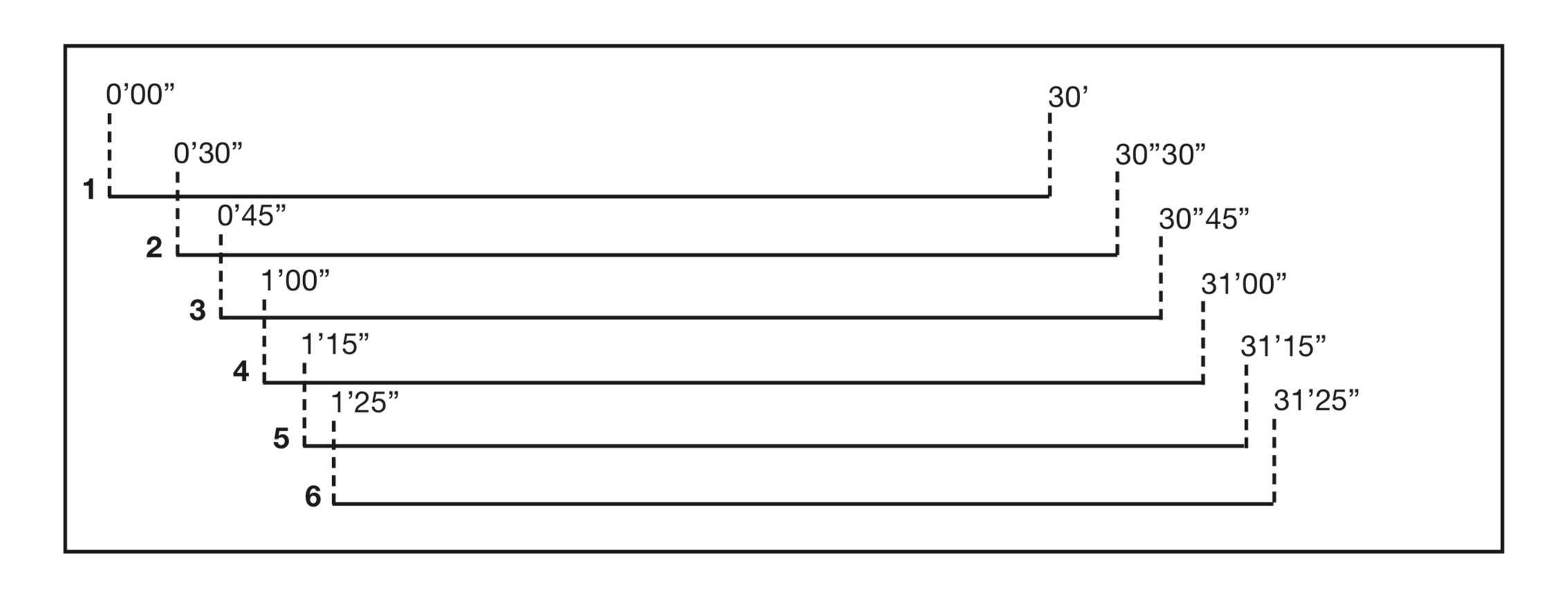︎︎︎Info
Title
Unruhe
Inventory
six el gtrs, w. e-bows and volume pedals
Year
2008
Duration
30’
Commission
Publisher
Recording
Premiere
February 18, 2011
Studio @ Billings Forge
Hartford, CT (US)
Restless Guitar Sextet
Scott Comanzo
Adrian Knight
Matt Sargent
Thomas Schuttenhelm
Jesse Stanford
Joel Weik
Studio @ Billings Forge
Hartford, CT (US)
Restless Guitar Sextet
Scott Comanzo
Adrian Knight
Matt Sargent
Thomas Schuttenhelm
Jesse Stanford
Joel Weik
︎︎︎Detailed Inventory
six electric guitars six e-bows
six volume pedals
︎︎︎Note
For this work, there is no full score, only six independent parts. The work is in six sections or periods (numbered from 1-6 in each part). Each period consists of a series of pitches. This series is played twice. There is no need for any exact synchronisation between the six parts.
For each player, the combined duration of all periods is 30’ (minutes). Each player has a stopwatch that they start when they start playing. Guitar 2-6 start 30 seconds or more after the guitar 1; see parts. You should remain “after” guitar 1 throughout the work (see figure below).
As for the use of e-bows and volume pedals, each pitch is slowly faded in and out. Play completely without vibrato throughout the work. Before the pitch is faded in, make sure that the e-bowed string is vibrating, keep a steady hand, and at all times avoid causing the string to vibrate against the e-bow or the fretboard (this causes unwanted buzz). Find a way of playing that ensures the absolute stability of all pitches (this may be different on your instrument and you should experiment with different e-bow positions in order to get the best result). Never position the e-bow directly above the pickup since this will result in a distorted sound not suitable to this piece.
The sections come in pairs: section 1, 3 and 5 and 2, 4 and 6 have the same patterns (within each part) respec- tively. Some pitches change, some remain. As for the ending, stop playing in the same order that you entered. Finish your respective period. Don’t ever stop in the middle of a period; instead, slightly adapt the pace at which you change pitches so that are “in time” with guitar 1 when he/she gives a cue at the start of each period. The order of entrances and exits are shown in the figure below.
The work should be performed entirely in the dark, with the six guitarists dispersed in a circle surrounding the audience.

